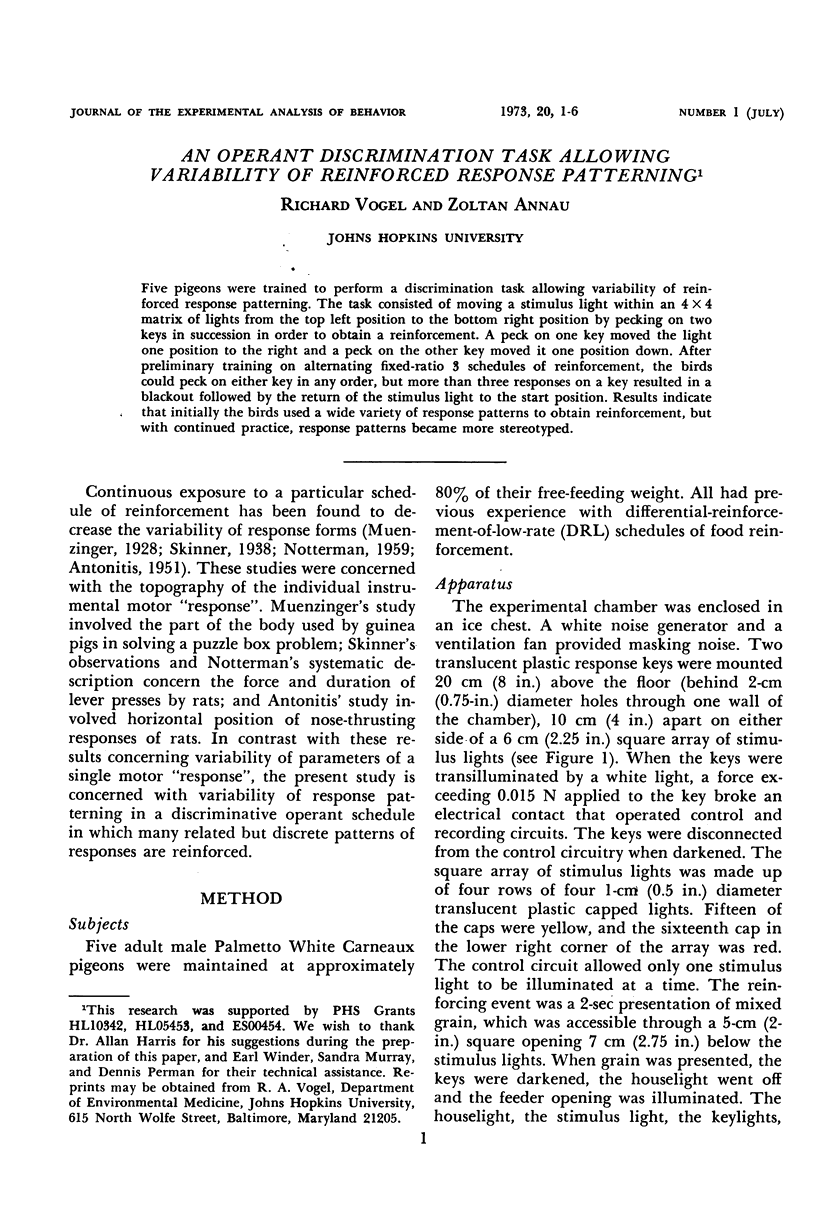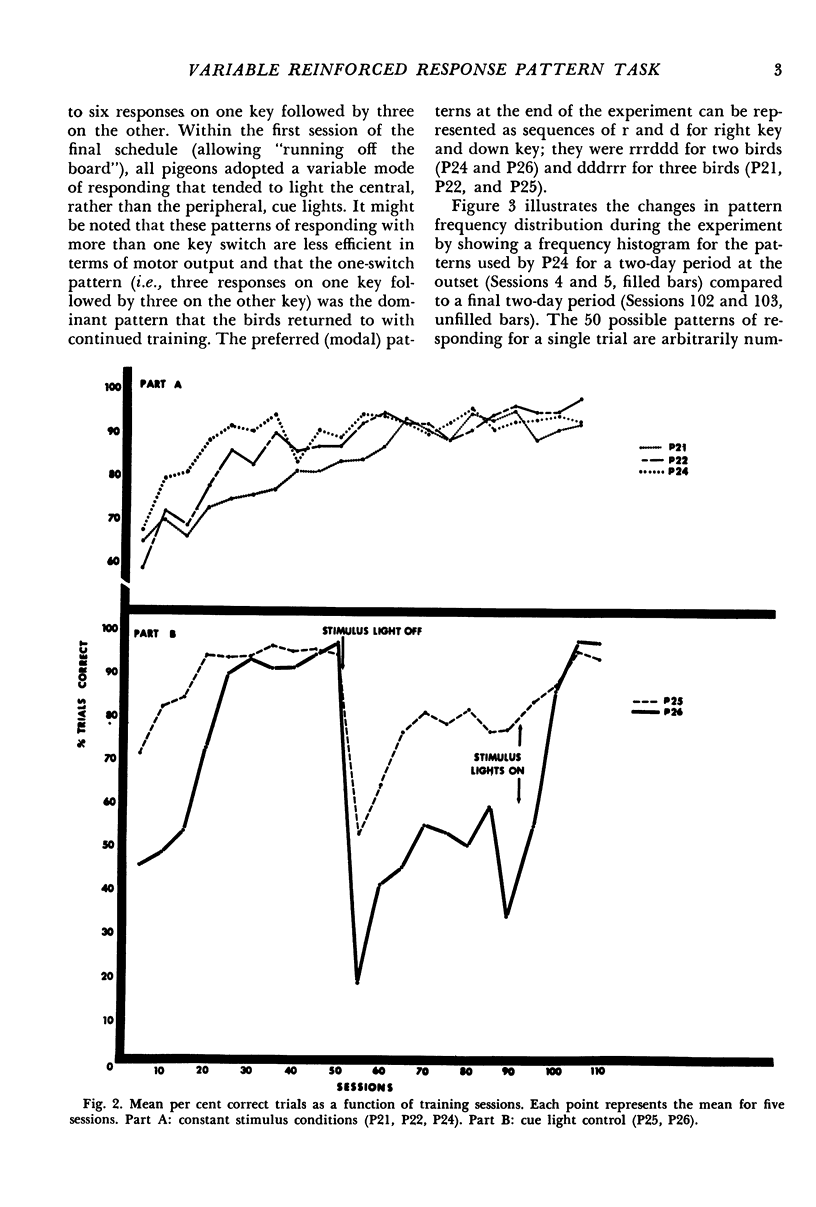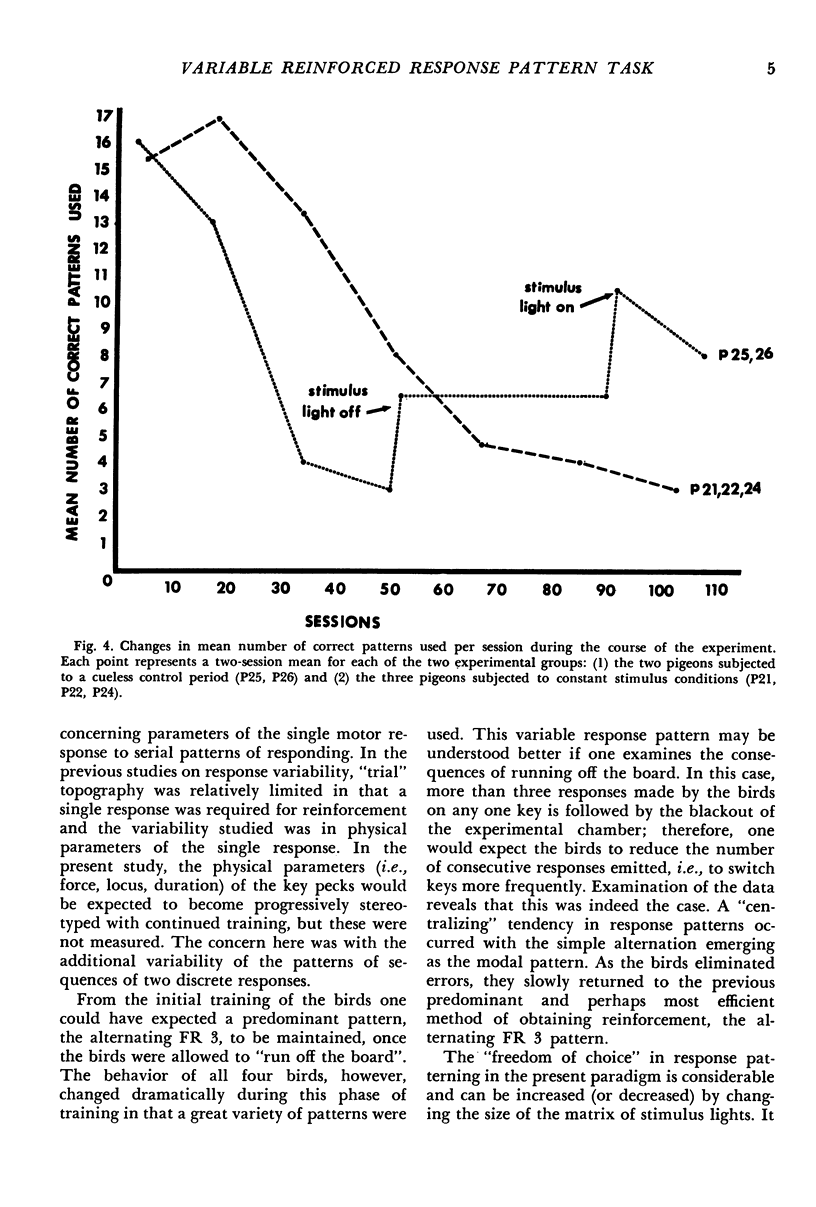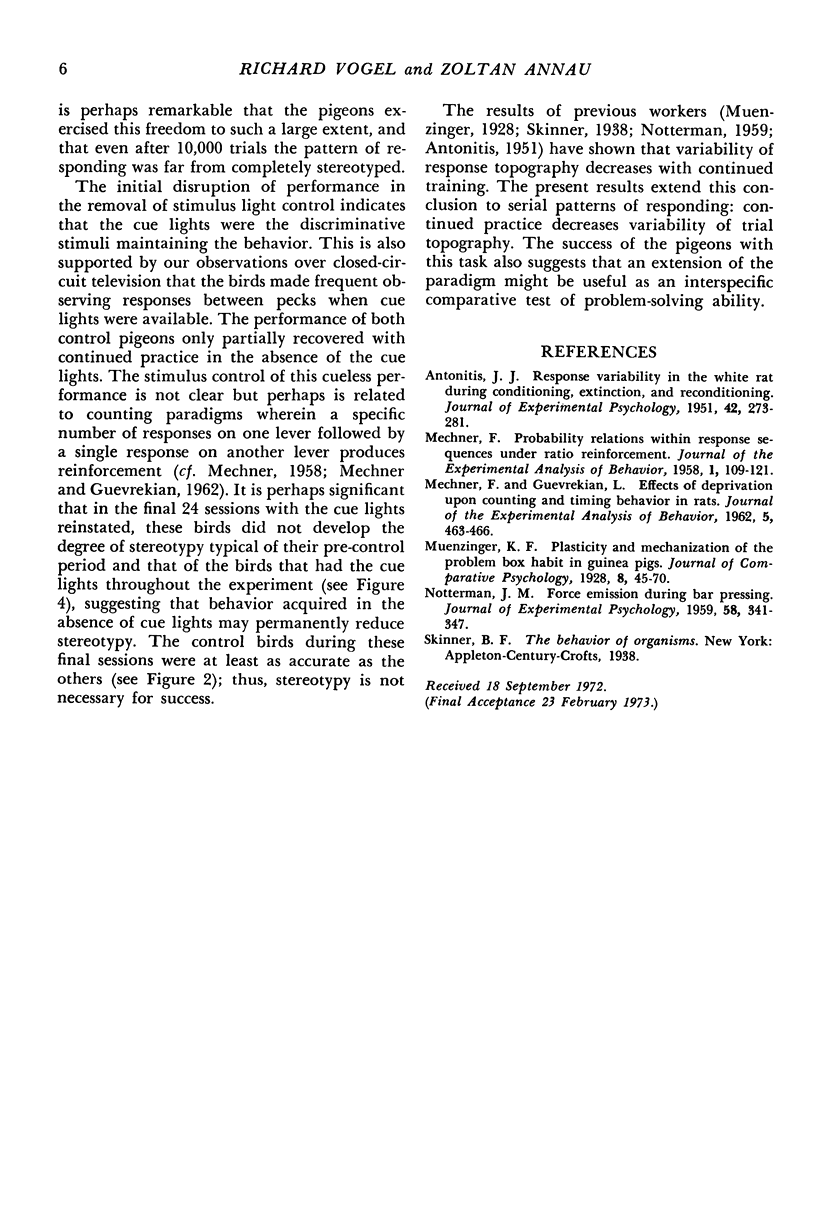Abstract
Five pigeons were trained to perform a discrimination task allowing variability of reinforced response patterning. The task consisted of moving a stimulus light within an 4×4 matrix of lights from the top left position to the bottom right position by pecking on two keys in succession in order to obtain a reinforcement. A peck on one key moved the light one position to the right and a peck on the other key moved it one position down. After preliminary training on alternating fixed-ratio 3 schedules of reinforcement, the birds could peck on either key in any order, but more than three responses on a key resulted in a blackout followed by the return of the stimulus light to the start position. Results indicate that initially the birds used a wide variety of response patterns to obtain reinforcement, but with continued practice, response patterns became more stereotyped.
Full text
PDF





Selected References
These references are in PubMed. This may not be the complete list of references from this article.
- ANTONITIS J. J. Response variability in the white rat during conditioning, extinction, and reconditioning. J Exp Psychol. 1951 Oct;42(4):273–281. doi: 10.1037/h0060407. [DOI] [PubMed] [Google Scholar]
- MECHNER F., GUEVREKIAN L. Effects of deprivation upon counting and timing in rats. J Exp Anal Behav. 1962 Oct;5:463–466. doi: 10.1901/jeab.1962.5-463. [DOI] [PMC free article] [PubMed] [Google Scholar]
- Mechner F. Probability Relations within Response Sequences under Ratio Reinforcement. J Exp Anal Behav. 1958 Apr;1(2):109–121. doi: 10.1901/jeab.1958.1-109. [DOI] [PMC free article] [PubMed] [Google Scholar]
- NOTTERMAN J. M. Force emission during bar pressing. J Exp Psychol. 1959 Nov;58:341–347. doi: 10.1037/h0042801. [DOI] [PubMed] [Google Scholar]


